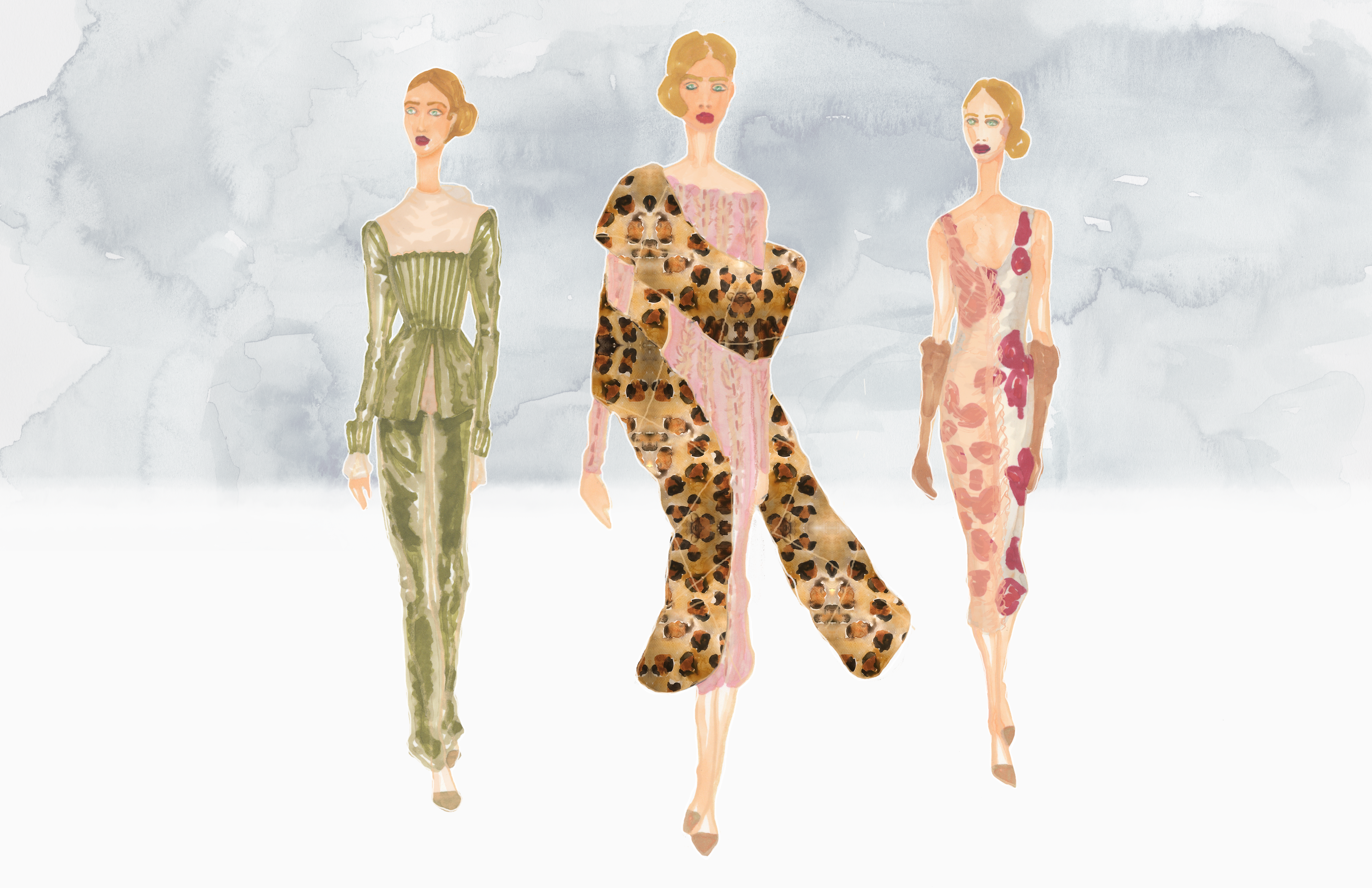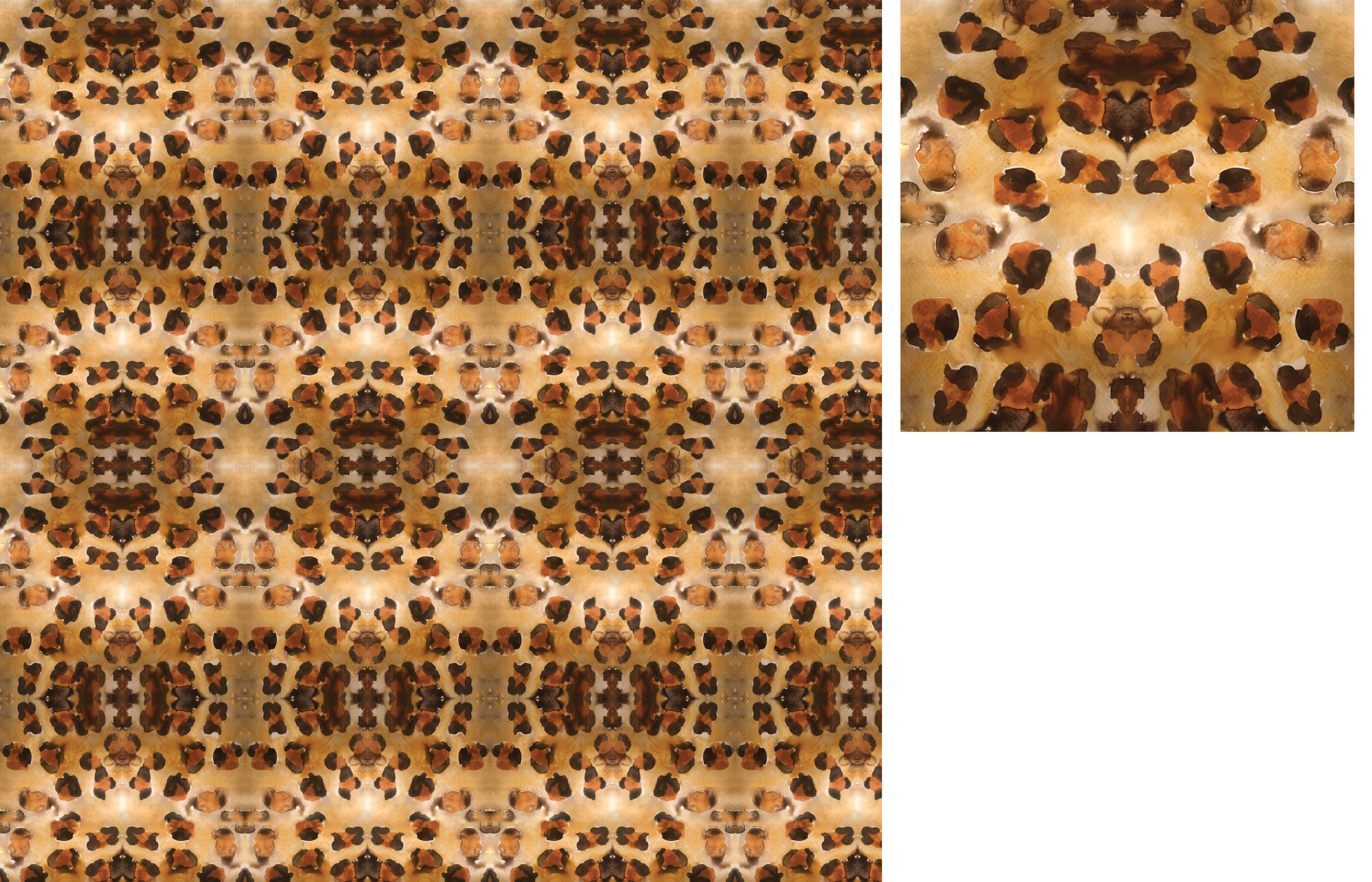For my collection, I wanted to deal with the theme of the homosexual gaze on women from a personal perspective – using my perception of women as a starting point while focusing on my mother as the main source. In the collection, I attempted to portray my view of my mother, trying to capture her softness, elegance, femininity while projecting her strong inner power. To me, this power is almost like an aura of deep thinking and strong emotional intelligence that is constantly present. Another important aspect that I wanted to present is the glamorous quality of the collection since I always saw my mother as one weather if it is her classic and effortless style and her distant mesmerizing presence.

Collection illustration

Final Surface Design
For my research in Seminar, I am exploring the homosexual gaze on women. I started looking for the difference between the heterosexual male gaze and the homosexual gaze on women. I read Judith Butler Gender Trouble and John Berger’s Ways of Seeing and realized that sexuality plays a strong part in our perception. According to Berger, the male gaze is so fundamentally structured in our culture, that even women see themselves through it— “From earliest childhood, she has been taught and persuaded to survey herself continually. And so she comes to consider the surveyor and the surveyed within her as the two constituent yet always distinct elements of her identity as a woman.” Thus, women are taught from a young age to act correspondingly to their role in society, in order to be desirable for men. This connects to Butler’s theory that defines gender as a performative social construction, that was developed through history. Taking both theories into consideration, I wonder, how does the lack of sexual attraction influence the way homosexuals perceive women? and how is it expressed in the work of gay fashion designers?
After reading those theories I wanted to focus on two gay fashion designers that I can establish my thesis on. I chose to deal with Yves Saint Laurent and Alexander McQueen as two very influential fashion designers that had a very different approach to fashion. Although their themes were different, their perception of women is not very far from one another. I found that both had a sensitivity to women’s social status although they expressed it in different ways. YSL liberated them through the invention of “Le Smoking” – the first pants tuxedo suit for women, something that until then was counted extremely provocative to wear. McQueen tried to capture women’s impossible existence within the sexual-social norms. Thus, he presented women in uncomfortable garments, that are bound to fail the models, as a metaphor to the social status of women. Both YSL and McQueen had a huge influence on who I am as a designer starting from the themes they used to their aesthetics. The admiration I have for them will hopefully help me understand my own ideas and develop a cohesive collection.
In Studio, I attempted to apply some of my realizations from the two readings. As a homosexual designer, studying the perception of other homosexual fashion designers, I decided to approach this subject from a biographical point of view. I have always been inspired by queer artists, so I was interested in learning how they conceptualize women, and whether there’s a common thread. What I found intriguing in many of those designers and artists is their determination to present women as larger than life with a strong sense of feminine power. When I think of feminine power I always think about my mother. I see her strength as something different than a man’s power. My mother captures for me the whole idea of female strength, a force that comes from under the surface, sophisticated and always with an aura of wisdom and sensitivity. Film director, Pedro Almodovar once stated that his relationships with women usually take the form of a mother-and-son connection; sometimes he is in the role of the mother, in others, he’s the son. I identify with what Almodovar said since there is something very foundational and basic about the mother-son relationship that influences the way a person connects to women throughout his life.
My creation process started with designing patterned textiles, based on my thesis as well as on my own relationship with my mother. One of the designs I made is inspired by a lining she had inside her black D&G coat, which was made of silk, with leopard print on it. My starting point was to try and use the daring leopard lining and to expose it by putting it on the outside. I used watercolors to create the print, scanned the pattern, then manipulated it in Photoshop. By that, I attempted to take the hidden and intimate and to make it proud, forceful and raw. In this collection, I tried to express the strength I saw in my mother and in other women, enabling the wearer to move comfortably but still feel glamorous and feminine. I wanted to create clothes that empower women and reflect their sexuality. Yves Saint Laurent had described this idea perfectly while talking about the Le Smoking suit —“A woman in a pantsuit is not masculine at all, a severe and implacable cut only emphasizes her femininity, her seductiveness all the more.”